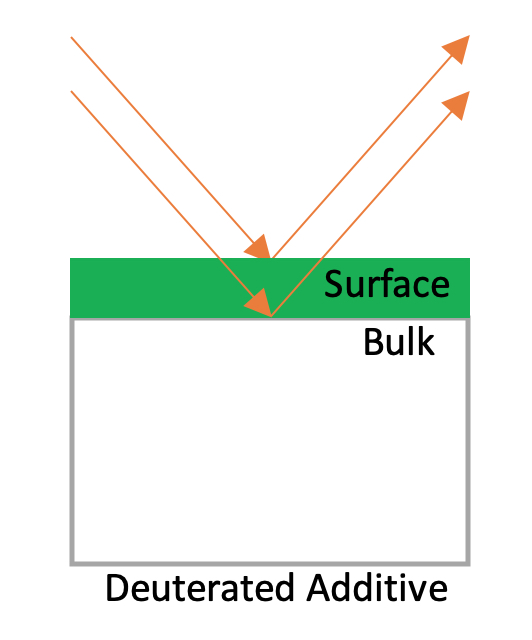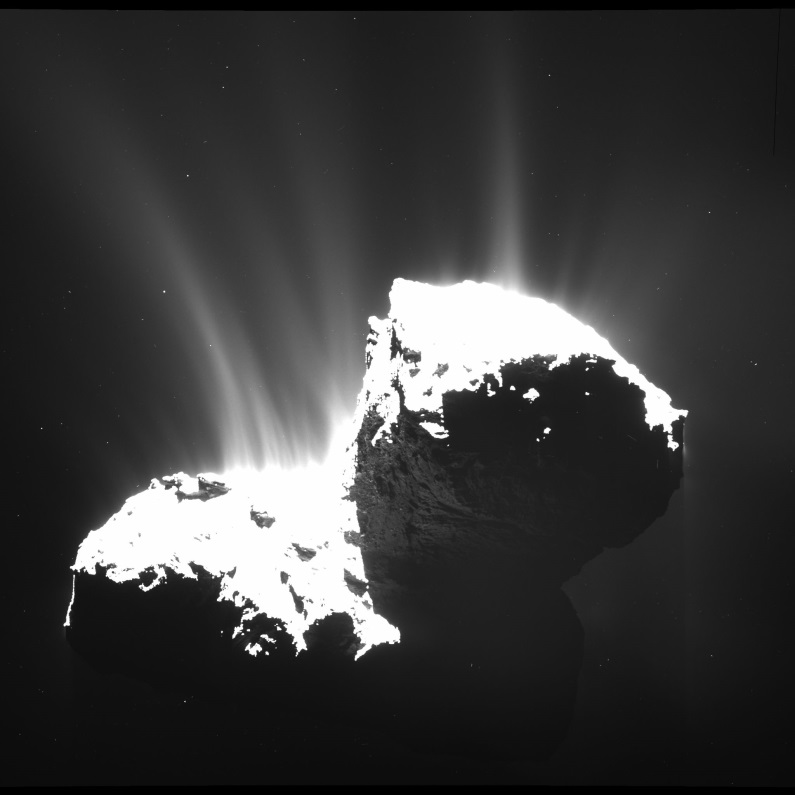The properties of frozen methane, when exposed to ionising radiation, have attracted significant interest in the planetary and interstellar astrophysics community since the early 1980s. In the late 1980s this interest was further boosted by the possibility of using solid methane as an efficient moderating medium in spallation neutron sources.
Moderating materials are essential to neutron science. The fast neutrons emerging from the target, known as “hot neutrons", are passed through a moderating material which slows them down. The slowed neutrons or “cold neutrons" have energies useful for a number of different neutron experiments.
Solid methane possesses unique neutronic properties that enable the conversion of hot, energetic neutrons into cold neutrons with approximately 3.5 times the efficiency of the commonly used liquid hydrogen based moderator. However, practical applications of solid methane as a neutron moderator material turned out to be much more challenging than initially expected.
In order to analyse test data from a solid methane moderator commissioned at ISIS Neutron and Muon Source a group of researchers and engineers developed a computer model based on the theory of thermal explosion. The team also found a surprising application of their work - altering the course of stray comets.
Solid methane as a neutron moderator
In neutron moderators the solid methane is kept at cryogenic temperatures and exposed to neutron radiation. The constant exposure to ionising radiation causes molecules to dissociate, leading to a build-up of defects in the solid methane matrix. At some critical number of defects a spontaneous self-accelerated recombination process takes place. The pressure spike produced by the rapid expansion of solid methane during self-accelerated heating can be intense enough to damage the moderator vessel, which applies certain limitations on solid methane moderator design and operational procedure.
Figure 1 shows a schematic of the solid methane moderator used in commissioning tests at ISIS Neutron and Muon Source. If the rapid expansion of solid methane were to damage the walls of this vessel (shown in pink) the outer layers of the solid methane moderator (shown in green and purple) are designed to safely contain the moderator material, even in the event of moderator breakdown.

|
Figure 1 Illustrative sketch of the decoupled ISIS TS2 Solid Methane Moderator. The solid methane moderator vessel (shown in pink) is encased in an outer vacuum can (shown in green) and an infrared radiation shield (shown in purple) to contain the moderator material in the event of moderator breakdown. Credit: O. Kirichek, C.R. Lawson, D.M. Jenkins, C.J.T. Ridley, D.J. Haynes “Solid methane in neutron radiation: Cryogenic moderators and cometary cryo volcanism " Cryogenics, 88 (2017) 101-105, DOI: 10.1016/j.cryogenics.2017.10.017 |
The most recent methane moderator vessel developed at ISIS Neutron and Muon Source has vessel walls thick enough to completely eliminate the possibility of moderator breakdown. The downside of this design is that the thick walls reduce the cold neutron flux used for neutron experiments. In their paper the team suggest other approaches to avoid damage to the moderator vessel, which could be useful in the design of new methane moderators at neutron sources.
Changing the course of rouge comets
Astonishingly, bulk solid methane inclusions, whose existence on comets has been recently suggested, are exposed to an environment similar to that of a neutron moderator.
“It would be easy to miss the similarities between a moderator material at a neutron facility in the Oxfordshire countryside and a frozen comet hurtling through space – but they are more alike than you might think. Both are thought to contain frozen methane, both are kept in cryogenic conditions and both are exposed to ionising radiation"
Dr Chris Lawson, ISIS Neutron and Muon Source
Comets spend a considerable amount of time in the low temperature environment of the Kuiper Belt and the Oort-Opik cloud, subject to the continuous radiation of outer space. In these conditions solid methane might accumulate a substantial number of radiation defects, which in turn could lead to spontaneous self-accelerated heating triggering the eruption of a cryo-volcano.

|
Figure 2 Cryo-volcanic eruptions on 67P/Churyumov–Gerasimenko comet. Image credit: ESA/Rosetta/MPS for OSIRIS Team MPS/UPD/LAM/IAA/SSO/INTA/UPM/DASP/IDA link here.
|
If it were possible to deposit relatively small amounts of energy into these radiation defects, then thermal activation could be utilised for the deliberate triggering of a cryo-volcanic eruption. This could be achieved by shining an infrared laser beam, generated by a moderate energy laser installed on an orbiting spacecraft similar to ESA's Rosetta, onto the comet. Each eruption triggered by the laser beam produces an intense discharge of fast-moving gas/dust jets. If cryo-eruptions are triggered multiple times at defined positions on a comet, and with a known direction of jet ejection, it could be possible to change the comet's trajectory.
Authors: Oleg Kirichek & Chris Lawson
Further information
Details of the full research paper:
O. Kirichek, C.R. Lawson, D.M. Jenkins, C.J.T. Ridley, D.J. Haynes “Solid methane in neutron radiation: Cryogenic moderators and cometary cryo volcanism" Cryogenics, 88 (2017) 101-105, DOI: 10.1016/j.cryogenics.2017.10.017
Read more on recent unidentified cometary ejection here.
Contact the authors Oleg Kirichek & Chris Lawson.
